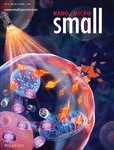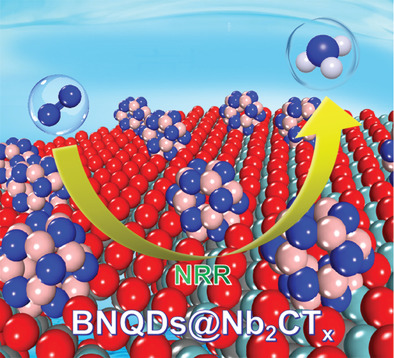Journal list menu
Export Citations
Download PDFs
Cover Picture
Photothermal and Enhanced Photocatalytic Therapies Conduce to Synergistic Anticancer Phototherapy with Biodegradable Titanium Diselenide Nanosheets (Small 40/2021)
- First Published: 06 October 2021
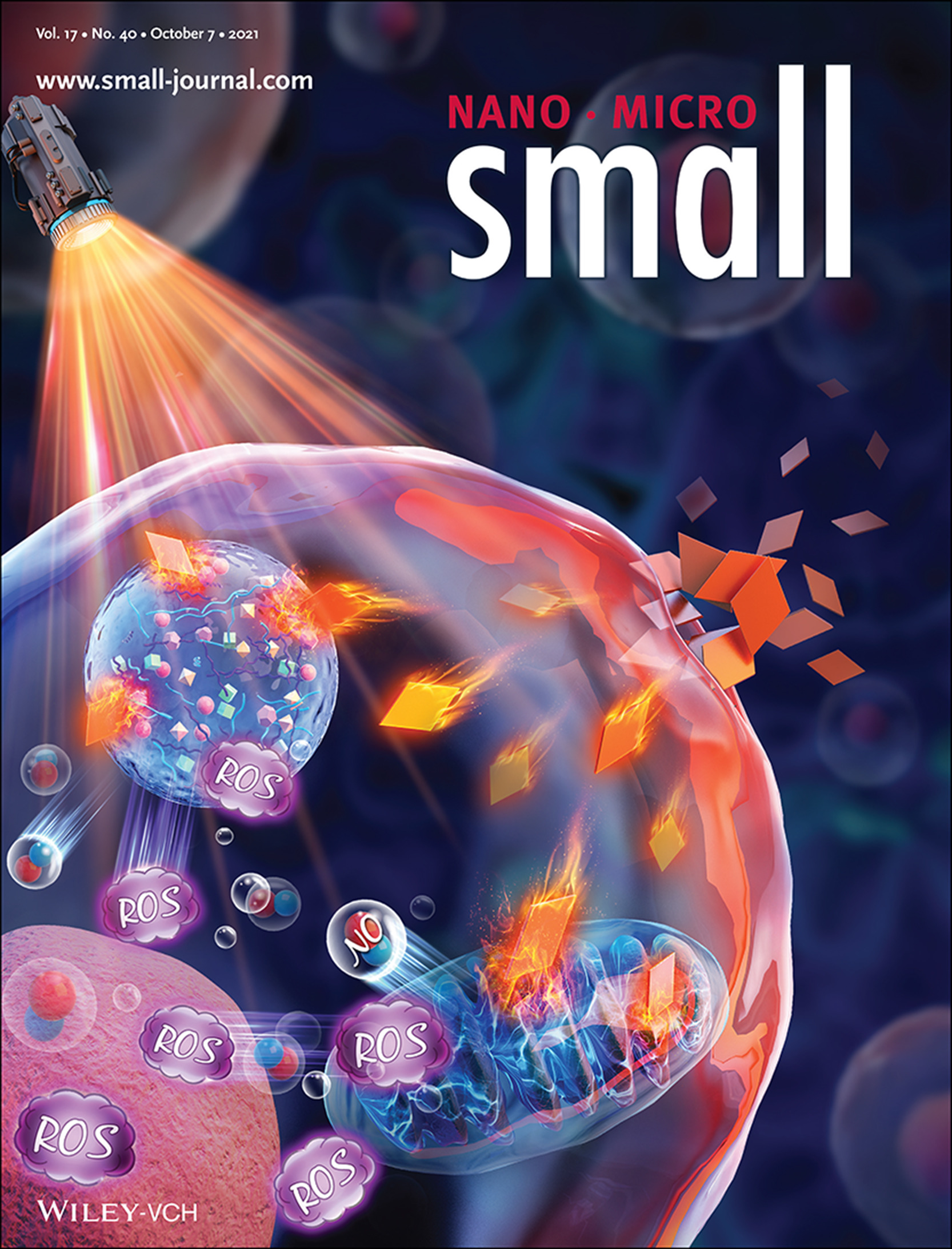
Titanium Diselenide Nanosheets
In article number 2103239, Xianming Li, Zhenyou Jiang, Zhengbo Sun, and co-workers synthesize a novel nanosheets (TiSe2) with high photothermal conversion efficiency and good biocompatibility. TiSe2 nanosheets could achieve high temperatures, with heat improving their catalytic ability to further amplify oxidative stress to efficiently kill cancer cells upon NIR laser irradiation.
Inside Front Cover
Boosting Hydrogen Evolution Reaction via Electronic Coupling of Cerium Phosphate with Molybdenum Phosphide Nanobelts (Small 40/2021)
- First Published: 06 October 2021
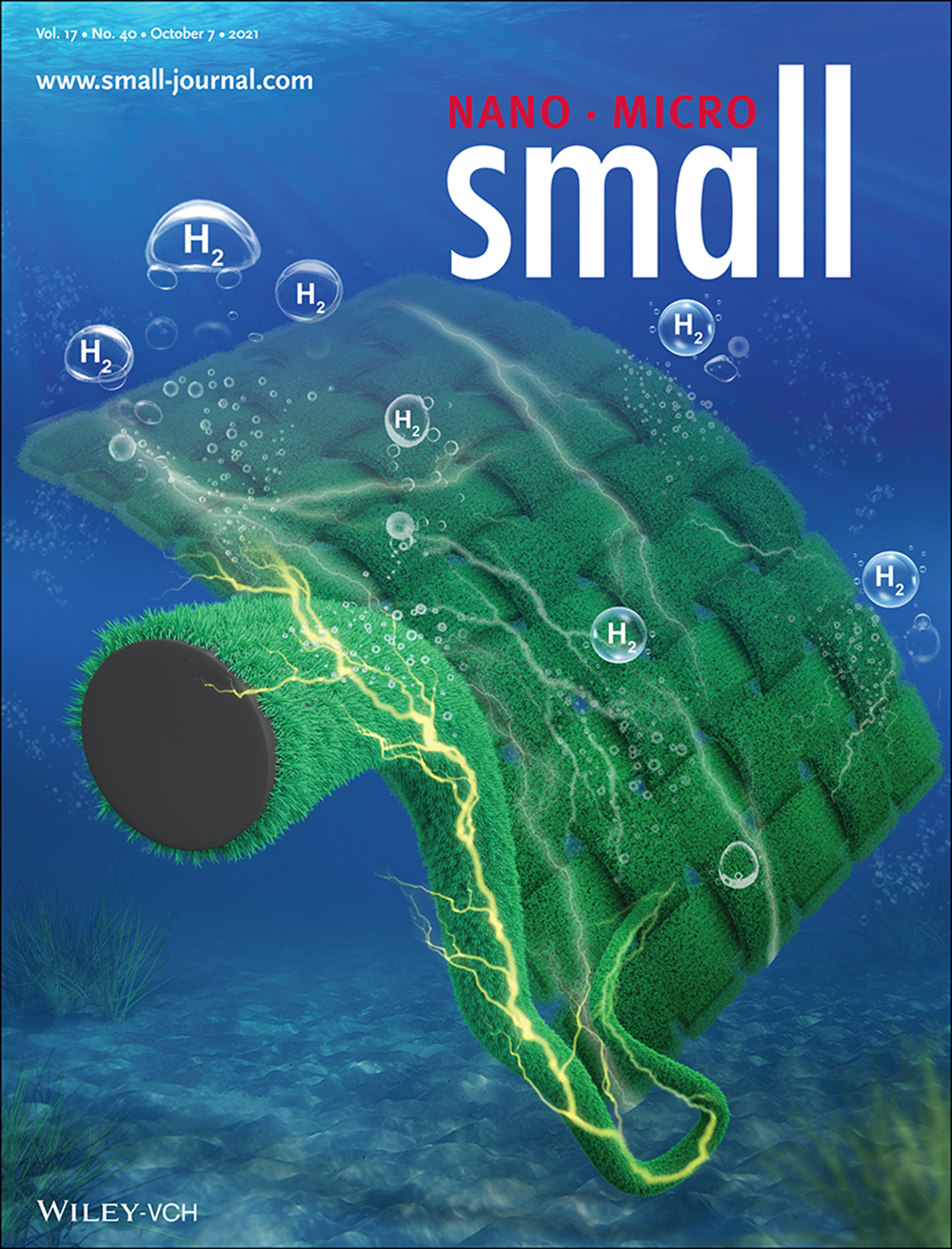
Heterostructured Electrocatalysts
In article number 2102413, Baocang Liu, Rui Gao, Jun Zhang, Bin Liu, and co-workers report the construction of a novel heterostructured electrocatalyst of CePO4/MoP/carbon cloth (CC) constituting MoP nanobelts with surface-decorated CePO4 nanoparticles on CC for hydrogen evolution reaction (HER). The CePO4/MoP/CC electrocatalyst exhibits a low overpotential of 48 mV at 10 mA cm−2 in alkaline medium due to the optimized electronic structure of MoP and more exposed active sites.
Inside Back Cover
Growth and Selective Etching of Twinned Graphene on Liquid Copper Surface (Small 40/2021)
- First Published: 06 October 2021
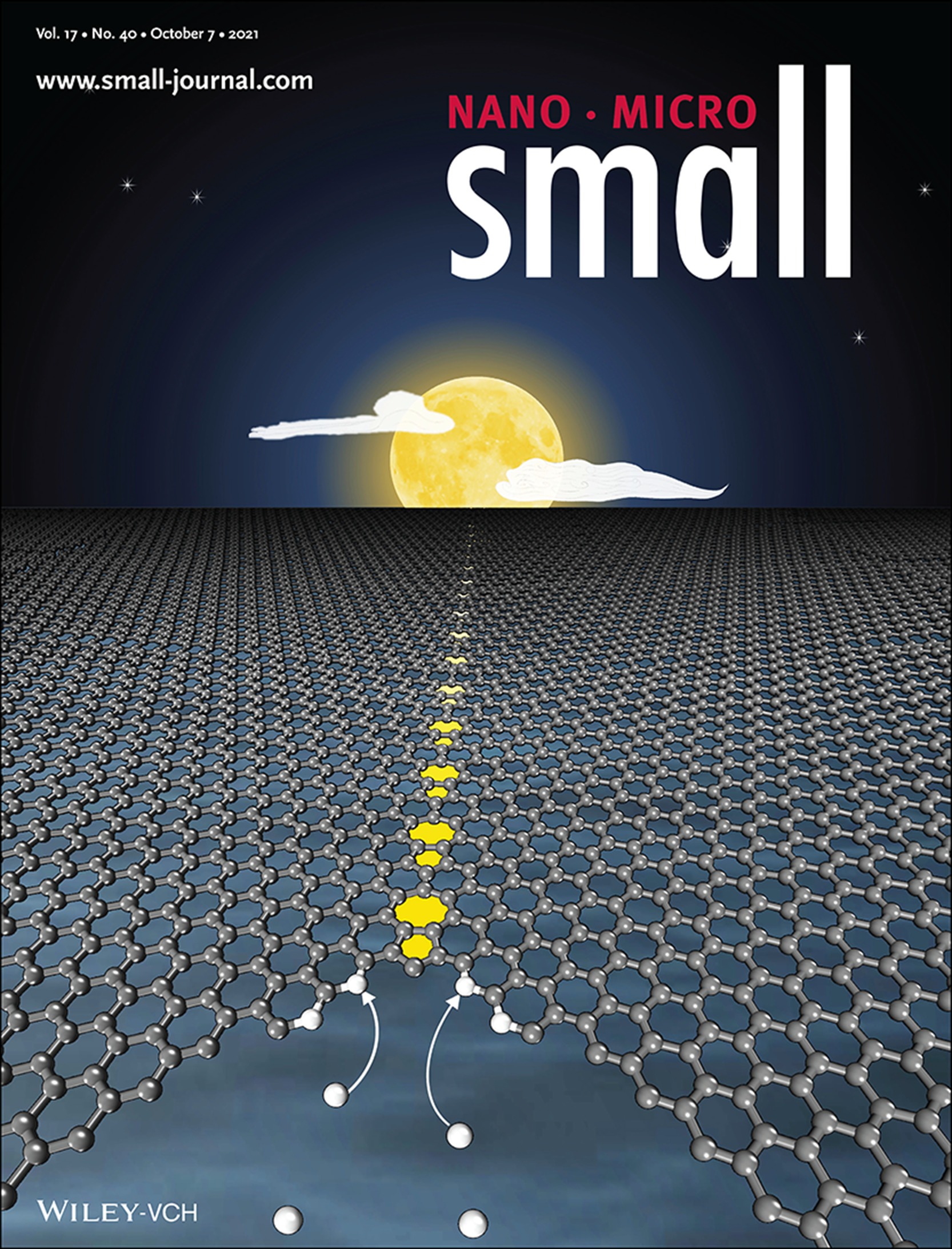
Twinned 2D Materials
In article number 2103484, Zonghoon Lee, Feng Ding, and co-workers have predicted the growth of twin boundaries in 2D materials and realized the formation of ultralong and straight twin boundaries in graphene.
Back Cover
Endogenous Stem Cell-Based In Situ Tissue Regeneration Using Electrostatically Interactive Hydrogel with a Newly Discovered Substance P Analog and VEGF-Mimicking Peptide (Small 40/2021)
- First Published: 06 October 2021
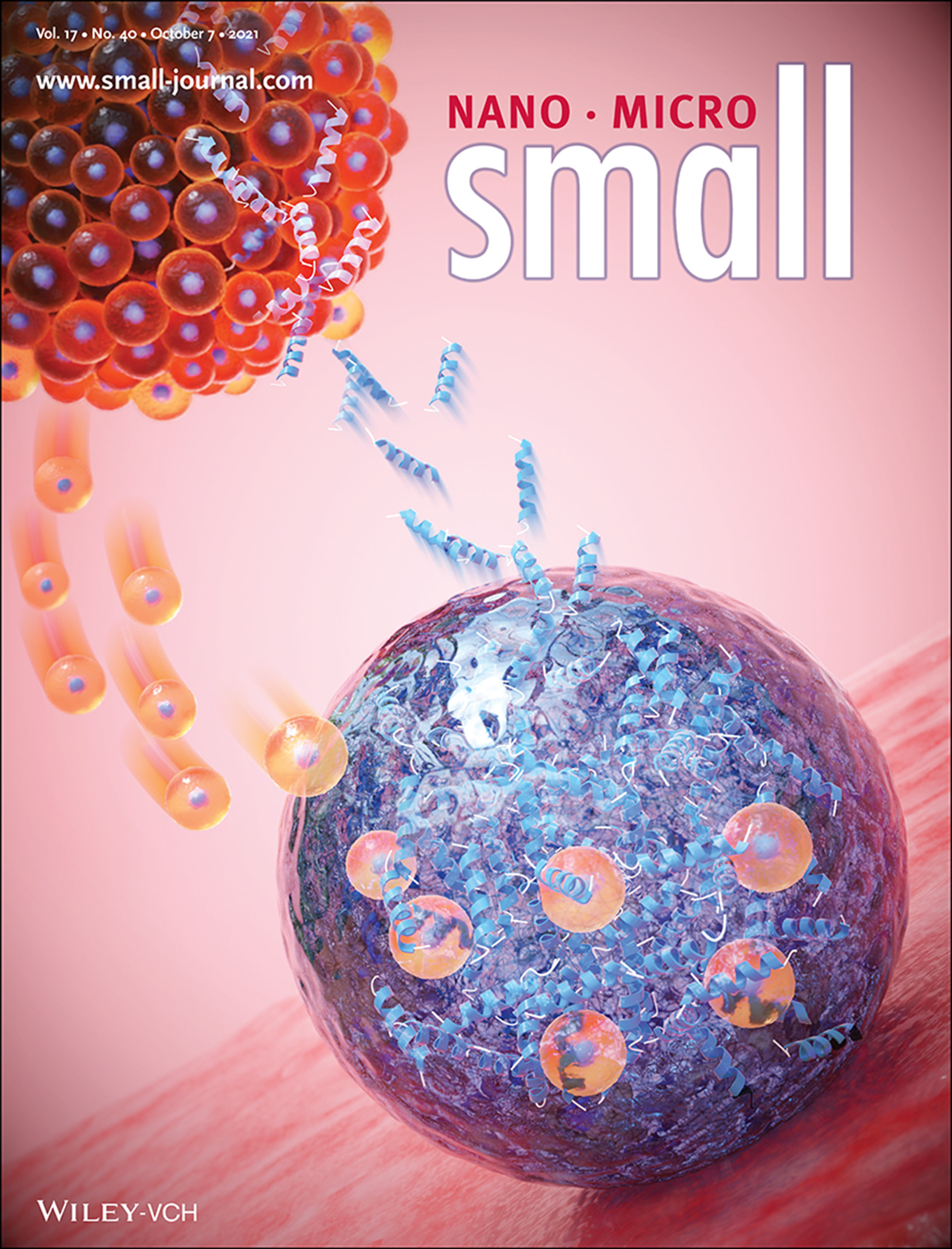
In-Situ Tissue Regeneration
In article number 2103244, Sangdun Choi, Moon Suk Kim, and co-workers report the in-situ tissue regeneration using electrostatically interactive hydrogel with a newly discovered substance P analog and VEGF-mimicking peptide. The result will be a viable alternative to ex vivo manipulated stem cells as endogenous stem cell-based in-situ tissue regeneration.
Masthead
Reviews
Structure and Interface Modification of Carbon Dots for Electrochemical Energy Application
- First Published: 28 July 2021
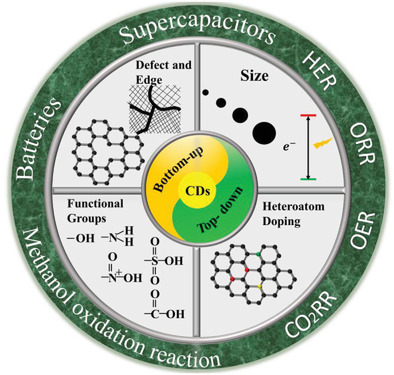
Carbon dots (CDs) open a new avenue for regulating properties due to abundant defects, functional groups, and so on, which show great effects in electrical energy storage and electrochemical catalysis. In this review, three key points related to CDs are presented in detail: structure and interface modification of CDs, original syntheses of CDs composites (CDs/X), and their applications.
Biomass-Derived Carbon Materials: Controllable Preparation and Versatile Applications
- First Published: 17 June 2021
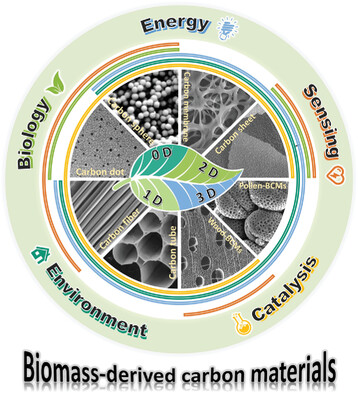
Biomass-derived carbon materials (BCMs) have wide potential applications due to their diverse structures and properties. In this paper, the recent progress in the preparation and applications of BCMs are reviewed. The key processing factors influencing the obtained BCMs, such as, chemical compositions of biomass, carbonization approaches, pretreatment, and activation, are discussed. Finally, the remaining challenges and future directions are discussed.
Emerging Cocatalysts on g-C3N4 for Photocatalytic Hydrogen Evolution
- First Published: 28 July 2021
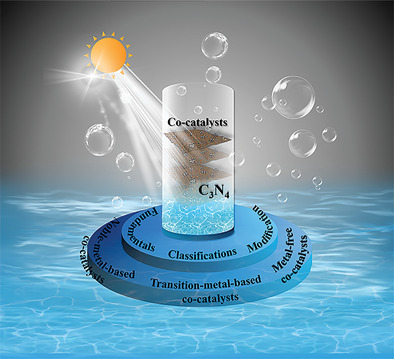
Benefitting from the low recombination rate of charge carrier and accelerated surface catalytic reaction induced by cocatalysts, much research has been focused on that how to improve the water reduction reaction efficiency. In this case, the recent advances over the utilization of cocatalysts based on g-C3N4 are summarized.
Research Articles
Photothermal and Enhanced Photocatalytic Therapies Conduce to Synergistic Anticancer Phototherapy with Biodegradable Titanium Diselenide Nanosheets
- First Published: 06 September 2021
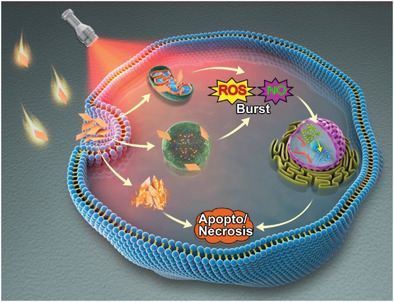
Biodegradable titanium diselenide nanosheets constitute excellent properties in synergistic phototherapy for cancer treatment. Upon near-infrared irradiation, the NSs can achieve high temperatures, and couple with heat improving their catalytic ability to further induce cellular oxidative stress burst out; the synergistic effects of photothermal and enhanced photocatalytic therapy facilitate apoptosis and necrosis in tumor cells.
Boosting Hydrogen Evolution Reaction via Electronic Coupling of Cerium Phosphate with Molybdenum Phosphide Nanobelts
- First Published: 07 September 2021
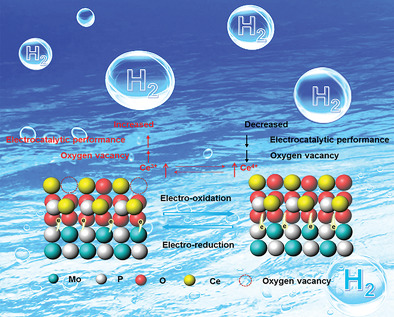
A heterostructured electrocatalyst of CePO4/MoP/carbon cloth constituting MoP nanobelts with surface-decorated CePO4 nanoparticles is constructed for hydrogen evolution reaction (HER). The Ce3+ in CePO4 can promote the formation of oxygen vacancies in CeO2 formed on CePO4 surface during HER, which effectively regulates the electronic structure of MoP and increases the numbers of active sites, therefore greatly boosting the HER performance.
Growth and Selective Etching of Twinned Graphene on Liquid Copper Surface
- First Published: 13 September 2021
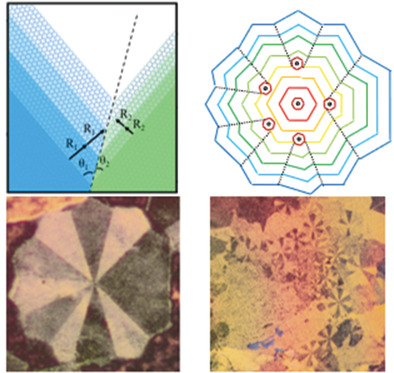
Growth of ultra-long straight grain boundaries isotropic liquid surface is ideal for synthesizing 2D materials with ultra-long straight twin boundaries. The above figure illustrates that when a graphene island grows on a liquid copper surface, ultra-long straight twin boundaries are formed as expected.
Endogenous Stem Cell-Based In Situ Tissue Regeneration Using Electrostatically Interactive Hydrogel with a Newly Discovered Substance P Analog and VEGF-Mimicking Peptide
- First Published: 04 September 2021
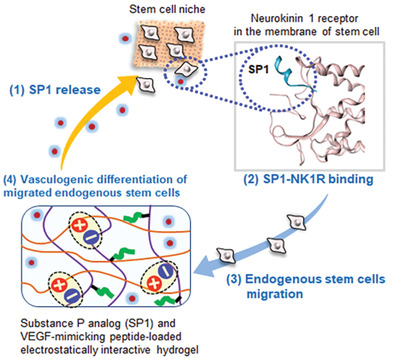
This study elucidates the superior role of a newly discovered substance P analog for human mesenchymal stromal cell migration using molecular dynamics simulations and demonstrates the promising potential of SP1-loaded C/H-VP hydrogels for endogenous stem cell-based in situ tissue regeneration as a viable alternative to ex vivo manipulated stem cells.
Cobalt Selenide Hollow Polyhedron Encapsulated in Graphene for High-Performance Lithium/Sodium Storage
- First Published: 25 August 2021

Metal–organic frameworks-derived CoSe hollow polyhedron encapsulated in graphene (CoSe/G) is synthesized by self-assembly and in situ selenization strategies. The unique structural design contributes to the structural integrity and fast reaction kinetics during cycling. When used as anodes, the CoSe/G composites achieve excellent cycle stability and rate performance for lithium- and sodium-ion storage.
Ion Irradiation Inducing Oxygen Vacancy-Rich NiO/NiFe2O4 Heterostructure for Enhanced Electrocatalytic Water Splitting
- First Published: 18 August 2021
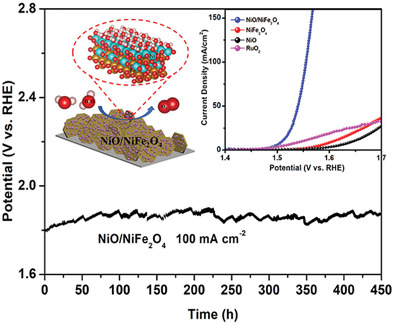
A nanosheet structured NiO/NiFe2O4 heterostructure with rich oxygen vacancies converted from NiFe LDH by Ar+ ions irradiation shows significant enhanced performance in OER, with an overpotential of 279 mV at 10 mA cm−2 and a low Tafel slope of 42 mV dec−1, as well as an excellent long-term stability at 100 mA cm−2 for 450 h.
Thermoelectric Performance Enhancement of Film by Pulse Electric Field and Multi-Nanocomposite Strategy
- First Published: 16 August 2021
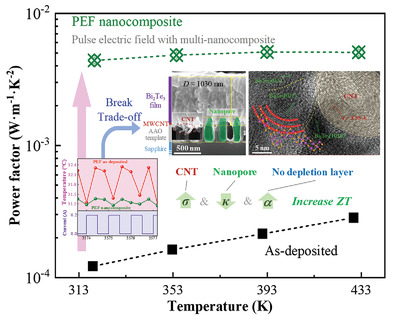
This study presents a method to enhance film thermoelectric (TE) performance by combining pulse electric field (PEF) with multi-nanocomposite. Nanocomposite breaks the trade-off among TE parameters, while the PEF removes the depletion layer around the carbon nanotubes. Thus, a record power factor for Bi2Te3 film is achieved, and improved maintenance of temperature difference increases the output power.
Unique Dual-Sites Boosting Overall CO2 Photoconversion by Hierarchical Electron Harvesters
- First Published: 22 August 2021
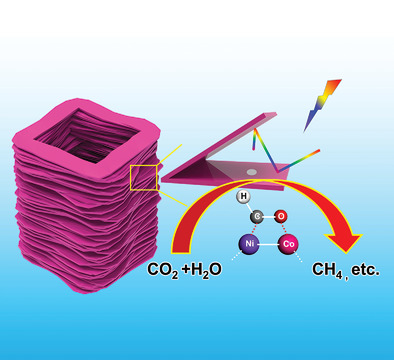
The CoNiP hollow nano-millefeuille/black phosphorus quantum dots photocatalyst serves as an electron harvester and photonic “black hole” achieves CO2-to-CH4 high selectivity of 86.6% as well as conversions rate of 38.7 µmol h−1 g−1 in the photocatalytic reaction of CO2 with H2O. These abundant low-coordinated dual-metal sites allow the simultaneous formation of MC and MO bonds, leading to the generation of very stable MCOM intermediates.
Grain Boundary Design of Solid Electrolyte Actualizing Stable All-Solid-State Sodium Batteries
- First Published: 01 September 2021
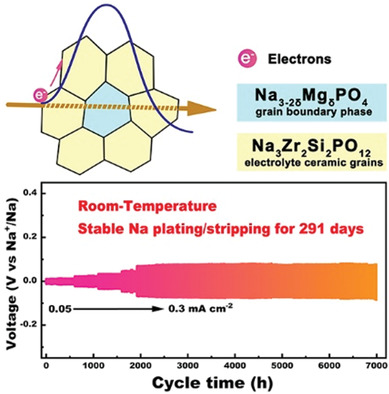
Solid electrolytes of high compatibility with sodium metal are critical for rechargeable all-solid-state sodium metal batteries. A grain boundary phase of Na3–2δMgδPO4 into Na3Zr2Si2PO12 is introduced to improve the compatibility with Na metal and suppress electron transport through grain boundary. Ultra-stable dendrite-free Na plating/stripping cycles are enabled for 291 days at room temperature.
N,N-Dimethylformamide-Assisted Shape Evolution of Highly Uniform and Shape-Pure Colloidal Copper Nanocrystals
- First Published: 01 September 2021
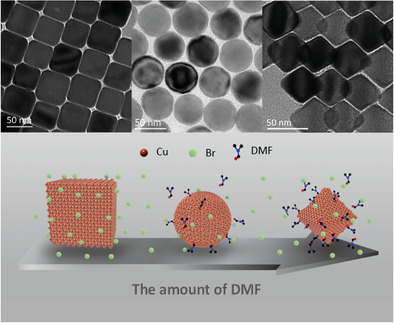
The N,N-dimethylformamide (DMF)-assisted shape evolution of highly uniform and shape-pure copper nanocrystals (Cu NCs) is demonstrated for the first time. DMF acts as a shape-directing agent by coordinating on the surface of the Cu NCs and controlling the shape of Cu NCs from a cube, to a sphere, and finally to an octahedron in high-temperature, non-polar phase reaction conditions.
Extended Barrier Lifetime of Partially Cracked Organic/Inorganic Multilayers for Compliant Implantable Electronics
- First Published: 03 September 2021
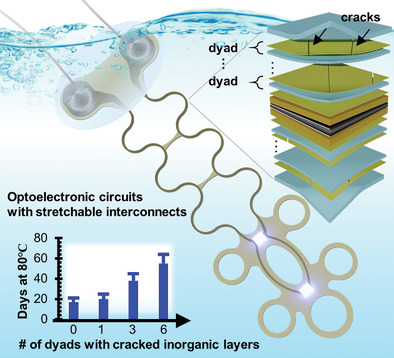
An organic/inorganic multilayer comprising high enough fracture energy and thickness of interlayers separates fracture as an independent event of inorganic layers at crack onset strains, preserving the barrier properties proportional to the number of dyads. Stretchable optoelectronic circuits coated with cracked multilayers remain functional with lifetimes equivalent to 3.0 years at 37 °C, maintaining conductivity after 3000 cycles at 10% strain.
Donor–Acceptor Competition via Halide Vacancy Filling for Oxygen Detection of High Sensitivity and Stability by All-Inorganic Perovskite Films
- First Published: 03 September 2021
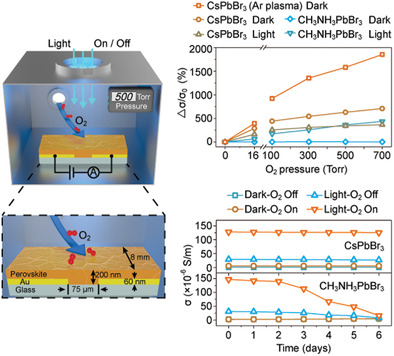
All-inorganic halide perovskite films that can adsorb O2 by halide vacancies at grain boundaries regardless of light condition have demonstrated higher intrinsic oxygen sensitivity than organic–inorganic halide perovskite films. A CsPbBr3-based oxygen sensor is developed with both ultrahigh sensitivity and long-term stability. The donor–acceptor competition by halide vacancy filling is revealed as the mechanism of oxygen sensing.
Heterogeneous Integration of Chiral Lead–Chloride Perovskite Crystals with Si Wafer for Boosted Circularly Polarized Light Detection in Solar-Blind Ultraviolet Region
- First Published: 04 September 2021
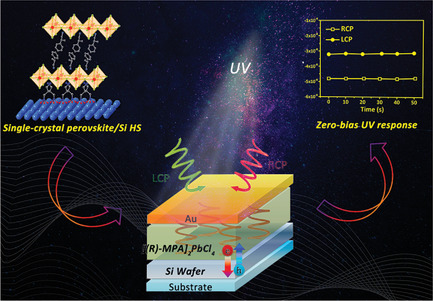
For the first time, the integration of wide-bandgap chiral HOIP single crystals with silicon technology is achieved, with well-defined [(R)-MPA]2PbCl4/Si heterostructure. Benefiting from the built-in electric field at junction, self-driven circularly polarized light detector of the heterostructure exhibits significantly amplified circular polarization sensitivity in solar–blind ultraviolet region, with a remarkable anisotropy factor up to 0.4.
Bacteria-Mediated Tumor Therapy via Photothermally-Programmed Cytolysin A Expression
- First Published: 01 September 2021

By leveraging the intrinsic ability of microorganisms, a thermally-activated biohybrid (TAB@Au) is constructed by biomineralizing gold nanoparticles on E. coli surface. Under laser irradiation, the generated local heat is utilized for PTT and elicited the expression of cytolysin A to strengthen treatment.
Highly Sensitive Ultraviolet and Visible Wavelength Sensor Composed of Two Identical Perovskite Nanofilm Photodetectors
- First Published: 25 August 2021
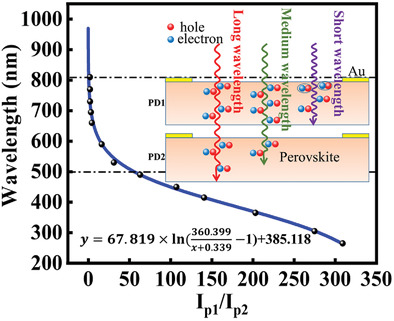
A novel wavelength sensor that is composed of two parallel perovskite photodetectors with typical Au/FA0.85Cs0.15PbI3/Au structure has been successfully fabricated. By virtue of the wavelength-dependent penetration depth of the perovskite, the wavelength of incident light can be quantitatively estimated through the current ratio of the two devices, with quite small absolute error and relative error.
Carrier Free Photodynamic Synergists for Oxidative Damage Amplified Tumor Therapy
- First Published: 04 September 2021
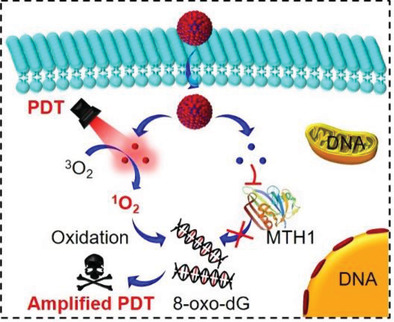
Carrier free photodynamic synergists are developed for oxidative damage amplified tumor therapy by destroying the reactive oxygen species (ROS)-defensing system without generating excessive ROS, which shed light on the development of self-delivery nanoplatforms for efficient photodynamic therapy by utilizing the limited oxygen in hypoxic tumors.
A High Rate and Stable Hybrid Li/Na-Ion Battery Based on a Hydrated Molten Inorganic Salt Electrolyte
- First Published: 28 August 2021
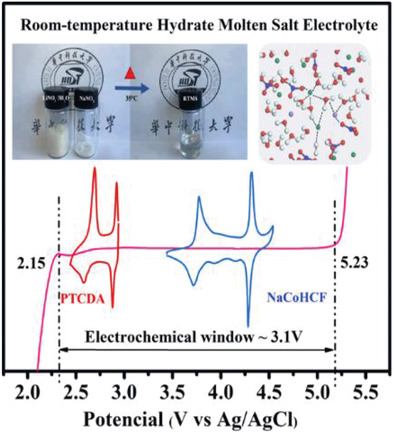
A novel economical room-temperature inorganic hydrated molten salt (RTMS) electrolyte expands the electrochemical window to 3.1 V. The special structure of RTMS without any free water shows Na+ is closer to NO3− in NO3−-Li-H2O chains to release more Li+. This hybrid Li/Na-ion battery based on RTMS electrolyte shows excellent performance and good economic benefits.
In Situ Defect Induction in Close-Packed Lattice Plane for the Efficient Zinc Ion Storage
- First Published: 01 September 2021
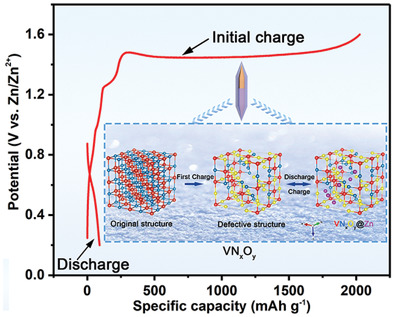
In this article, an in situ defect creation in close-packed lattice plane of vanadium nitride oxide in aqueous zinc-ion battery is reported. It is verified by theoretical calculation and experiment that the original compact structure is not suitable for the insert of Zn2+ ion, while a highly active one after initial electrochemically in situ transformation exhibits efficient zinc ion storage.
Bi2S3–In2S3 Heterostructures for Efficient Photoreduction of Highly Toxic Cr6+ Enabled by Facet-Coupling and Z-Scheme Structure
- First Published: 25 August 2021
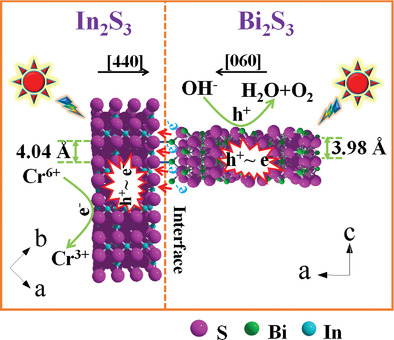
Bi2S3 nanorods@In2S3 nanoparticles heterostructure photocatalysts with facet-coupling between Bi2S3 (060) crystal facet and In2S3 (440) crystal facet and Z-scheme structure are reported. The heterostructure photocatalyst presents superior photoreduction efficiency among the reported photocatalysts, achieving nearly 100% Cr6+ photoreduction under visible light illumination.
Functionalized Tumor-Targeting Nanosheets Exhibiting Fe(II) Overloading and GSH Consumption for Ferroptosis Activation in Liver Tumor
- First Published: 27 August 2021
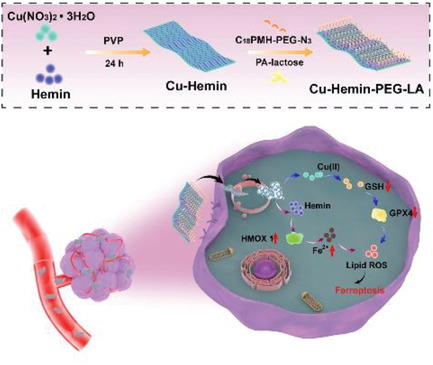
The tumor-targeting nanosheets are fabricated for inducing tumor ferroptosis. The released hemin and Cu(II) from nanosheets up-regulate the expression of heme oxygenase 1 protein and consume the intracellular glutathione content, which exhibit Fe2+ overloading and down-regulate the expression of glutathione peroxidase 4 in HepG2 cells, respectively. Finally, the nanosheets increase the lipid reactive oxygen species content and induce ferroptosis.
Constructing a Reinforced and Gradient Solid Electrolyte Interphase on Si Nanoparticles by In-Situ Thiol-Ene Click Reaction for Long Cycling Lithium-Ion Batteries
- First Published: 07 September 2021
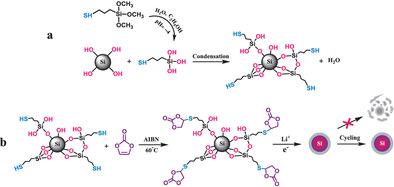
A reinforced and gradient solid electrolyte interphase (SEI) is constructed on Si nanoparticles by an in-situ thiol-ene click reaction of the hydrolyzed mercaptopropyl trimethoxysilane and vinylene carbonate, which can effectively homogenize the stress and strain during the lithiation of Si anode to greatly enhance its cycling stability.
Integrated, Highly Flexible, and Tailorable Thermoelectric Type Temperature Detectors Based on a Continuous Carbon Nanotube Fiber
- First Published: 09 September 2021
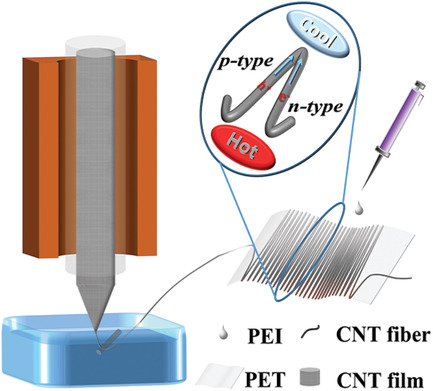
An integrated, highly flexible and tailorable thermoelectric type temperature detector is fabricated in situ based on a continuous single-walled carbon nanotube fiber with periodic p- and n-type intervals. Benefiting from the node contact, its sensitivity is improved by increasing the number of p–n thermocouples. The detector can be divided into several sub-detectors as designed, exhibiting the prospect of large-scale manufacture.
Wood Ionic Cable
- First Published: 08 September 2021

A wood-derived ionic cable with a high tensile strength of ≈260 MPa and a high conductivity of 1.5 × 10−4 S cm−1 is developed by a simple, low-cost, and green strategy via partial delignification and wet-twisting, which represents a new direction for the development of mechanically robust and stable nanofluidic devices derived from a resource-abundant biomass.
Simultaneously Engineering the Coordination Environment and Pore Architecture of Metal–Organic Framework-Derived Single-Atomic Iron Catalysts for Ultraefficient Oxygen Reduction
- First Published: 08 September 2021
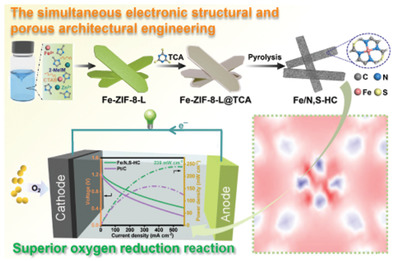
Hierarchical porous carbon nanorods decorated with atomically dispersed FeN4 sites modulated by local S for oxygen reduction (ORR) are prepared. The simultaneously modified electron structure and pore architecture could provide superior intrinsic ORR activity and more three-phase boundaries to facilitate the mass transport of ORR-relevant species, which result in ultraefficient oxygen reduction in alkaline medium.
A Highly Conductive All-Carbon Linked 3D Covalent Organic Framework Film
- First Published: 08 September 2021
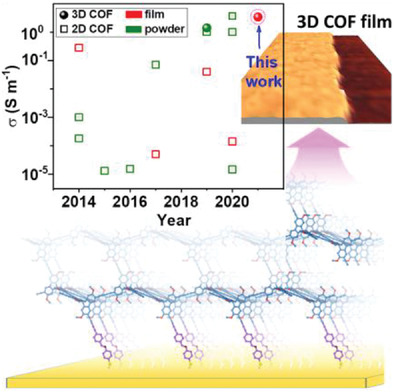
The preparation of all-carbon linked 3D covalent organic frameworks of high quality is challenging. It is reported here a bottom-up method, which successfully realize the fabrication of such a material in the form of a continuous and smooth film on different substrates. The films show a record high electrical conductivity within the 3D covalent organic framework (COF) family.
Synergistic Enhancement of Electrocatalytic Nitrogen Reduction Over Boron Nitride Quantum Dots Decorated Nb2CTx-MXene
- First Published: 09 September 2021
“Water-in-Sugar” Electrolytes Enable Ultrafast and Stable Electrochemical Naked Proton Storage
- First Published: 09 September 2021
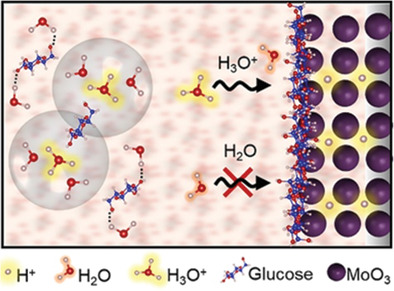
Water-in-sugar electrolytes with anomalously high conductivity are first proposed for the ultrafast electrochemical proton storage. The scarcity of free water in electrolytes and the glucose film in the electrode interface works in synergy to hinder the water interactions with electrode surface, enable the naked proton (de)intercalation, and consequently realize the stable cycling of electrodes.




